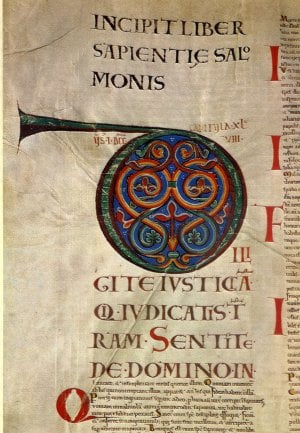 On April 11, 1945, American troops liberated the Nazi concentration camp at Buchenwald. The horror that the American soldiers found there was beyond comprehension: The camp held prisoners from all over Europe and Russia, including Jews and non-Jewish Poles and Slovenes, religious and political prisoners, Jehovah’s Witnesses, criminals, homosexuals, and prisoners of war.
On April 11, 1945, American troops liberated the Nazi concentration camp at Buchenwald. The horror that the American soldiers found there was beyond comprehension: The camp held prisoners from all over Europe and Russia, including Jews and non-Jewish Poles and Slovenes, religious and political prisoners, Jehovah’s Witnesses, criminals, homosexuals, and prisoners of war.
In addition to the hated Jews, Buchenwald held captive politicians, poets, concert pianists, architects and writers. Among the Buchenwald survivors were Nobel Peace Prize winner Elie Wiesel; child psychologist Bruno Bettelheim; Austrian architect and industrial designer Henry P. Glass; and Protestant theologian Dietrich Bonhoeffer. Clergy held inside its formidable walls included Yisrael Meir Lau, former Chief Rabbi of Israel; and Paul Schneider, German pastor, who died at the camp in 1939.
Although Buchenwald was not considered an “extermination camp,” historians estimate that more than 56,000 prisoners died there. Extreme malnutrition, disease, the “Vernichtung durch Arbeit” (extermination through labor) policy—all claimed many lives. Some prisoners were summarily executed with a shot through the back of the neck. Especially heinous were cases of human experimentation: experiments to test the amount of poison required to kill; infliction of severe phosphorus burns in order to test the effectiveness of a balm.
It was at Buchenwald that two Austrian priests, Otto Neururer and Mathias Spannlang, were crucified upside down on June 5, 1940. Records are sparse for Father Spannlang; but more information is available about the fate of Father Otto Neururer. It is his story I’d like to tell today.
* * * * *
 Otto Neururer was born in a devout Catholic family in Piller, Austria, the last of 12 children. He attended seminary in Brixen, then said his first Mass in his native village. He served the Church, as a teacher and a parish priest, in many locations, but was then assigned to Tirol. There were tensions within the Church in Tirol; Neururer was a strong supporter of the papal encyclical Rerum Novarum and joined the Christian Social Movement; other clergy in the area, including his superiors, were more conservative.
Otto Neururer was born in a devout Catholic family in Piller, Austria, the last of 12 children. He attended seminary in Brixen, then said his first Mass in his native village. He served the Church, as a teacher and a parish priest, in many locations, but was then assigned to Tirol. There were tensions within the Church in Tirol; Neururer was a strong supporter of the papal encyclical Rerum Novarum and joined the Christian Social Movement; other clergy in the area, including his superiors, were more conservative.
In 1938, Tirol was taken over by the Nazis, triggering the first bloody persecution of the Church in the history of Austria. Thousands of citizens were harassed, interrogated by Gestapo agents, and thrown into prisons or concentration camps.
Father Neururer was at the time a parish priest in Gotzens, near Innsbruck. A young woman of the town sought his counsel regarding her upcoming marriage; and Father Neururer, seeing that the man she was to marry had been divorced and was living an immoral life, counseled against the marriage. It just so happened that the man she was to marry was a close friend of the Gauleiter, the highest Nazi authority in Tirol. In retaliation for his wise counsel, Father Neururer was arrested and charged with “slander to the detriment to German marriage.”
Neururer was imprisoned, first at Dachau, then in Buchenwald. He was subjected to sadistic tortures, but he shared his scarce rations with other prisoners who were even weaker than he.
Perhaps it was a trap: In Buchenwald, he was approached by a prisoner who asked to be baptized. Father Neururer suspected that the request was a trap by an agent provocateur; but he did not refuse. Two days later he was transferred to the “bunker,” a place of extreme punishment. He was crucified upside down, like St. Peter, until he died.
Because Father Neururer was the first priest to be killed in a concentration camp, his remains were released and brought to a private crematorium. His ashes were placed in an urn by the crematorium, and were returned to the parish church of Gotzens for burial.
He was beatified by Pope John Paul II on November 24, 1996.










